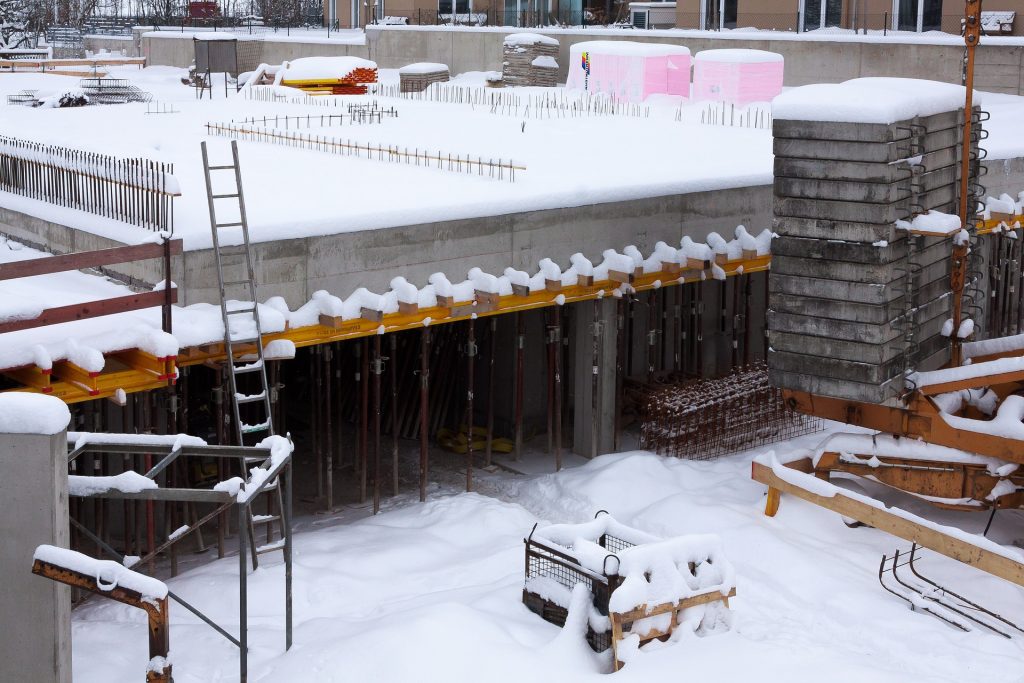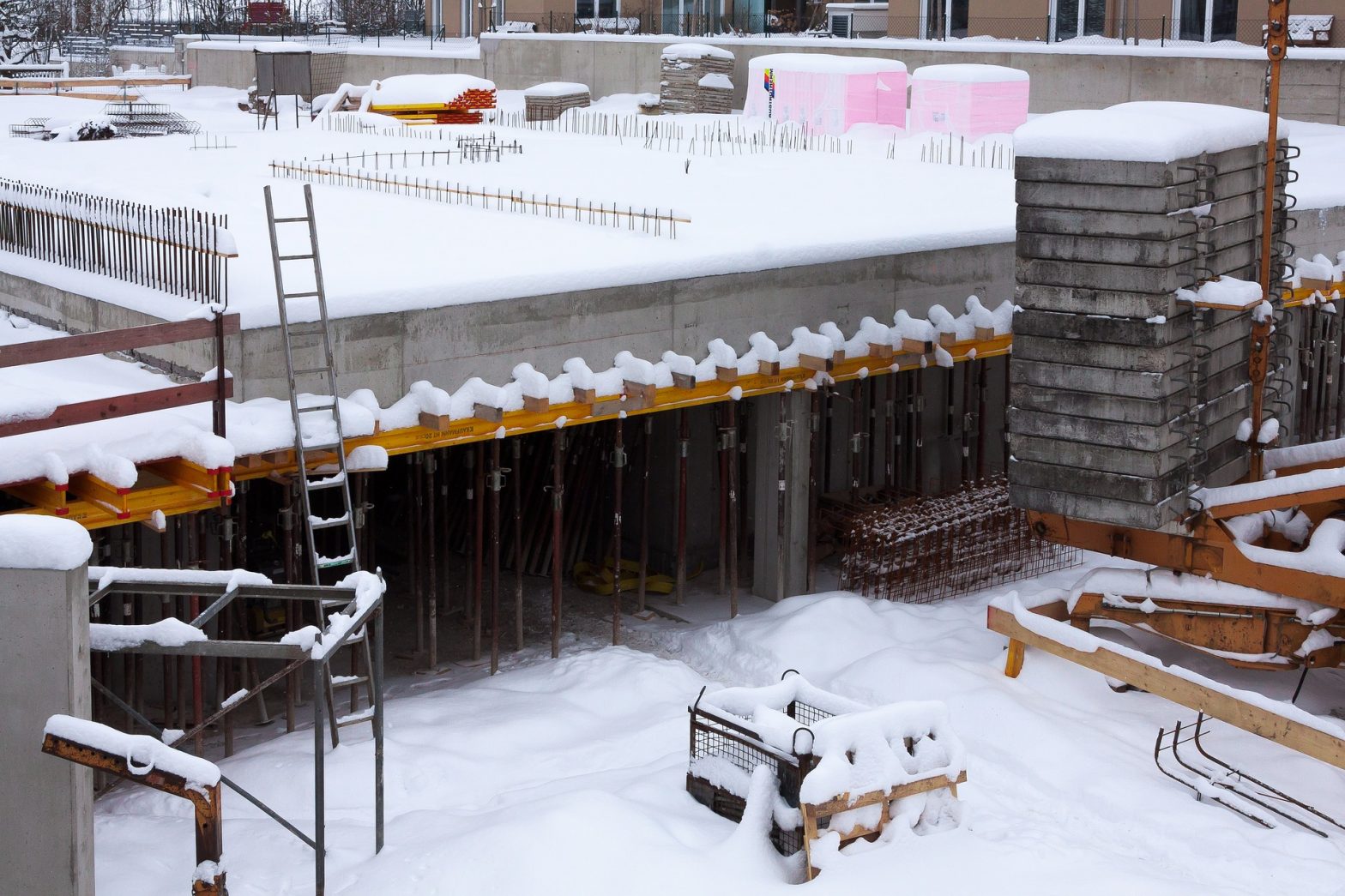
A construction project may be shut down for a variety of reasons, such as the loss of financing, stop-work orders, labor or supply disruptions or disasters. The duration of the shutdown can vary from days to years, depending on the circumstances. Some of the implications of a shutdown are obvious. There are considerations for security and fire protection. The project cost will increase due to loss of efficiency, escalation and remobilization. The revenue to be generated by the project will be delayed.
Less obvious are the risks associated with the performance of temporary structures and partially-completed permanent structures during an extended shutdown. These risks can lead to hazards to workers when construction resumes, as well as to abutters and the general public. If not managed these risks can greatly increase the cost of the project, increase the liability of project stakeholders and cause injury or property damage.
Structures are designed to resist loads from their occupancy as well as the effects of nature. However, until complete and enclosed, buildings and some other types of structures are susceptible to deterioration, damage and sometimes collapse. Temporary structures are often needed to maintain the stability of the structure or some portion thereof while it is under construction. Other temporary structures may provide access or protection to workers, adjacent properties or the public. The sequence of construction and any temporary structures used as means and methods of executing the work are parts of a logical plan to safely and efficiently complete the project. If something happens so that the plan cannot be followed to completion, the disruption can adversely affect later steps in the process. If it is not possible to complete steps in the process on time or in the right order, it might violate assumptions relied on to plan later steps. This can create hazards, especially if the disruption is protracted.
The loading assumptions for temporary and partially-completed structures present such a hazard. To the extent that they are subject to rational design, temporary structures and partially completed work are usually analyzed for a more limited collection of design loads and load cases than permanent structures. The standards used for analysis and design of temporary systems may permit smaller wind, snow and earthquake loads, accounting for the short duration of a particular condition. However, some designers neglect these entirely. While there is not a consensus on the practice, designers may accept a smaller factor safety for a temporary condition, ostensibly to account for lower uncertainty as to loading and the reduced exposure to the risk of overload or understrength. Since the intended duration of a temporary condition may be days or weeks, a construction shutdown could increase the duration significantly. This would increase the uncertainty of the loading and the risk exposure such that what had been an efficient design would become an inadequate design.
Other hazards arise from time-dependent properties of materials and the effects of exposure to the elements. Wood construction is affected by both. Allowable loads on wood structures can be increased 25 percent for construction loads, but this assumes a duration of only one week. Frequent exposure to moisture can reduce the design strength and stiffness; constant exposure can lead to decay. Excavation support in clay soils can fail if they are in service long enough for undrained strength behavior to develop. If water is allowed to collect in an excavation or on earthwork the soil will degrade, potentially destabilizing any structures it supports. Steel structures and equipment are subject to corrosion. Concrete intended for interior use is vulnerable to freeze-thaw damage.
During some construction procedures, it is necessary to risk instability or a localized failure for a brief time. For example, traditional pit underpinning results in portions of a foundation being undermined for up to a few days. When installing wood sheeting for excavation support or a soil nail wall, a few feet of soil has to be cut at a vertical slope before it can be supported. If an existing structure is to be elevated to replace its foundation or increase its height above ground, it is often vulnerable to falling off its temporary support due to wind. Potential short-term instabilities are often present when erecting steel or trusses. The sequencing of these operations is intended to manage risk from instability by limiting exposure in terms of time and work area, while providing monitoring and contingency plans. If work is not brought to a sufficient level of completion before stopping, it can be acutely hazardous.
When temporary structures or partially completed work will be left in place during an extended construction shutdown, strategies must be developed to manage the resulting risks. The assumptions underlying the construction planning need to be reviewed and adjusted. Temporary structures may need to be analyzed by a qualified engineer to assess the effects of a longer service life. The work in progress should be observed for deterioration and damage periodically and after unusual events like high winds, heavy snows and earthquakes. It may be necessary to obtain the permission of agencies having jurisdiction to remedy hazardous conditions.
Shutting down a construction project inherently increases the cost of construction. While the prospect of evaluating, monitoring and perhaps remediating temporary structures and partially completed work may be unattractive, it is small compared to the liabilities that could arise from a failure. Consideration of structural implications is an important risk management component of a safe extended shutdown of a construction project.
The information and statements in this document are for information purposes only and do not comprise the professional advice of the author or create a professional relationship between reader and author.
See also: Construction Risk Management, Temporary Structures for Construction
